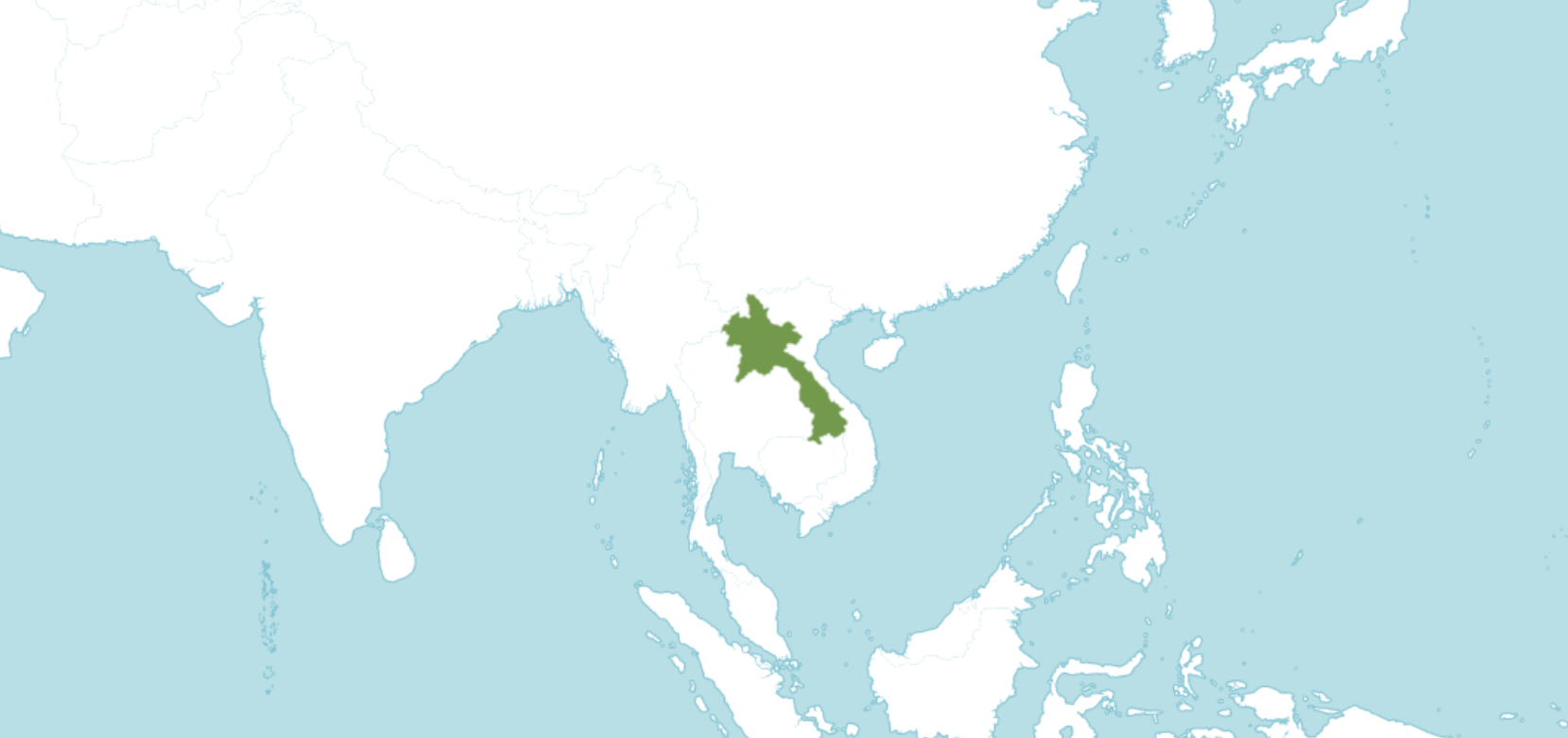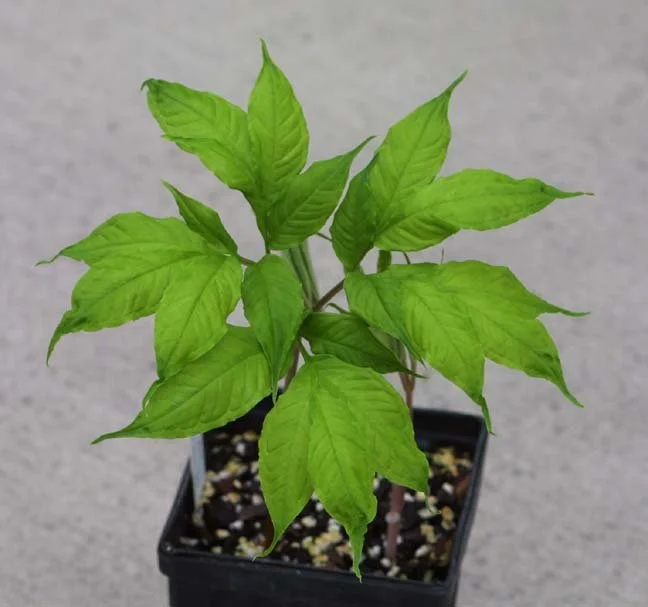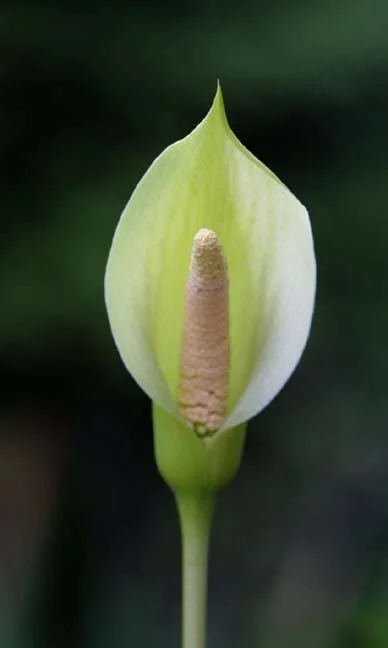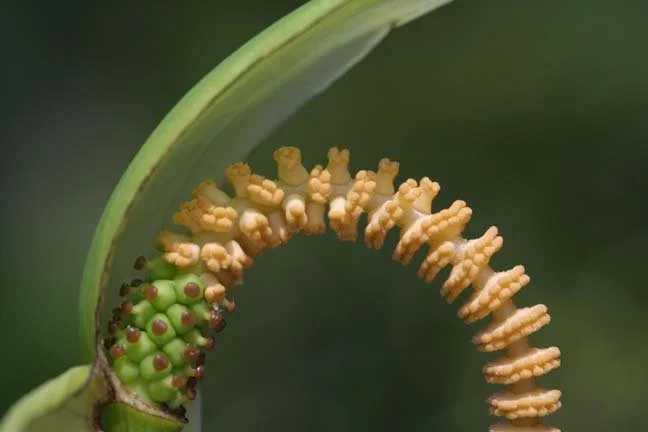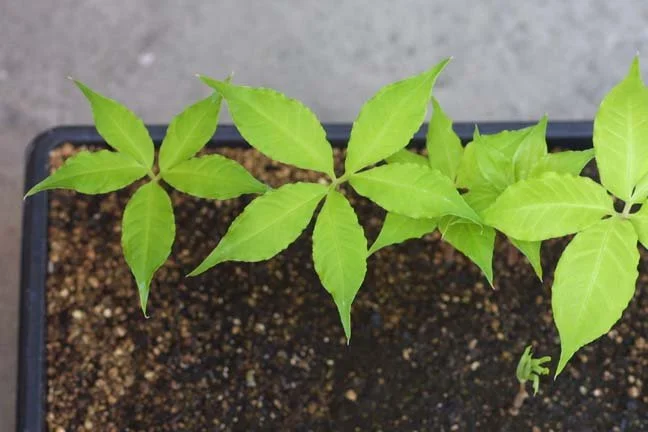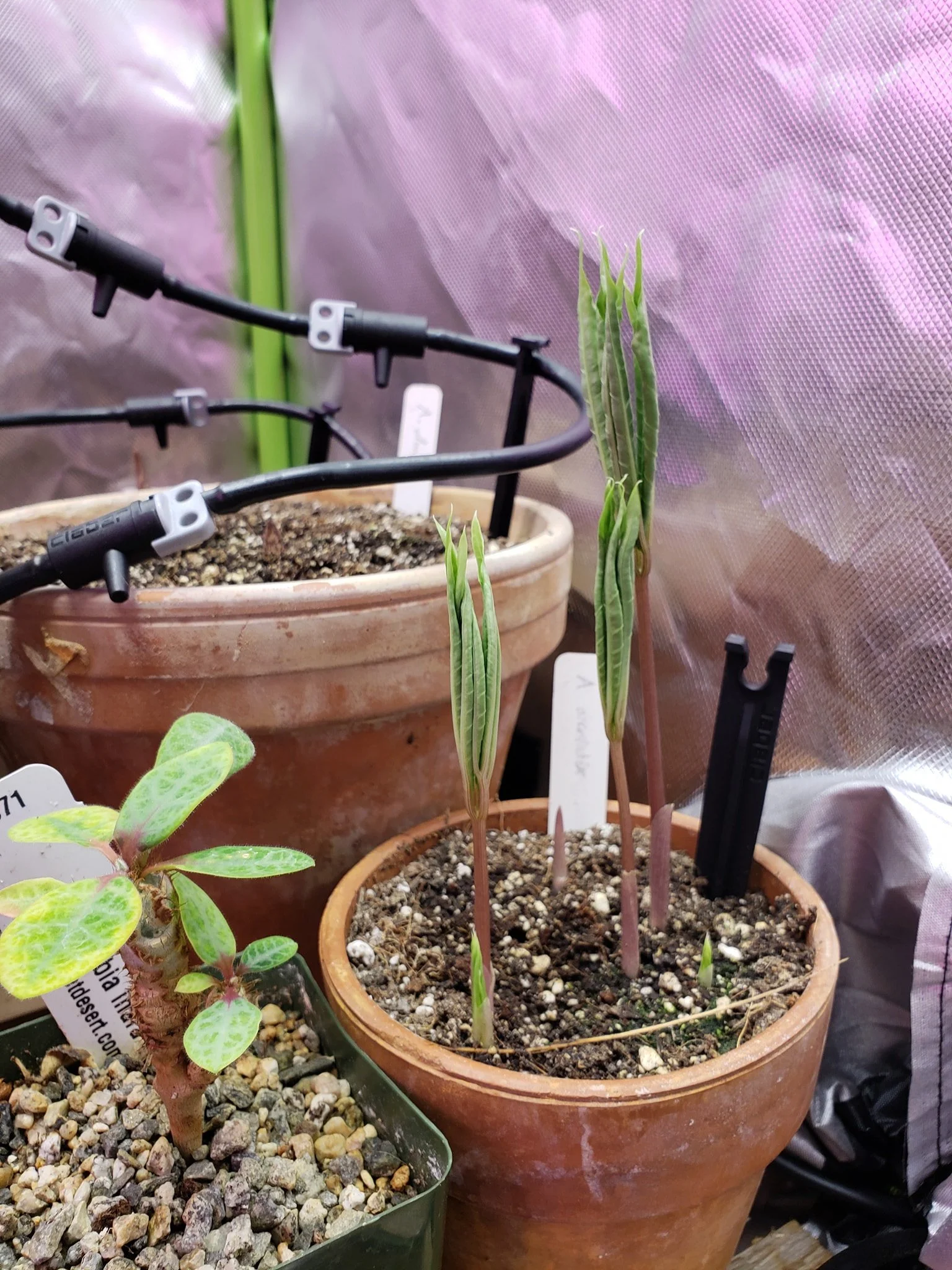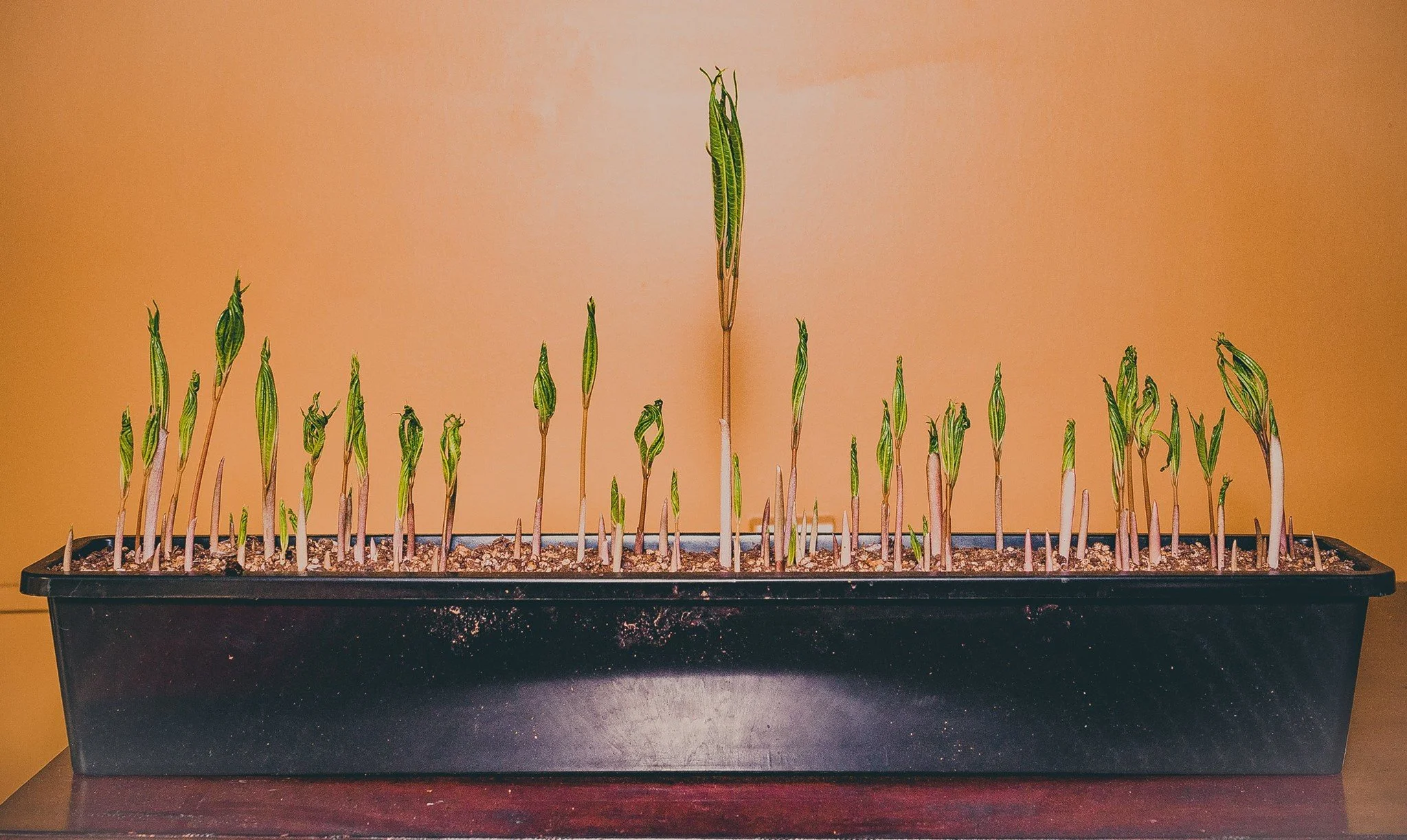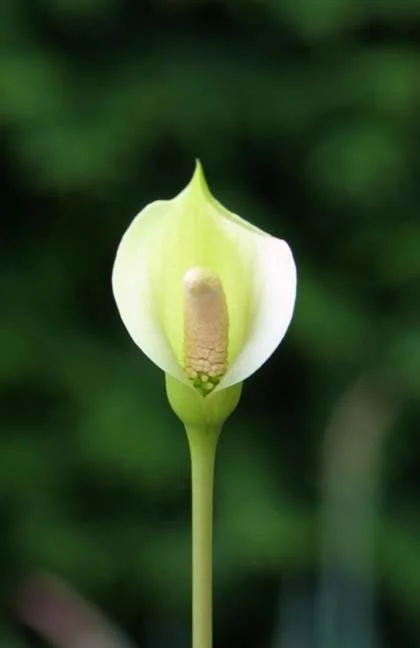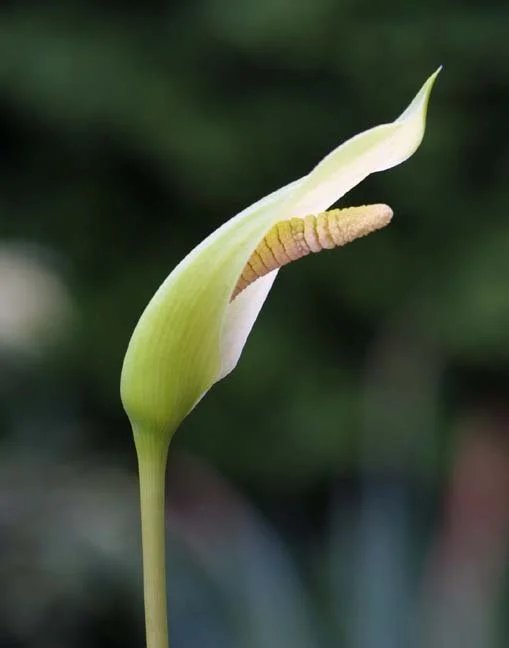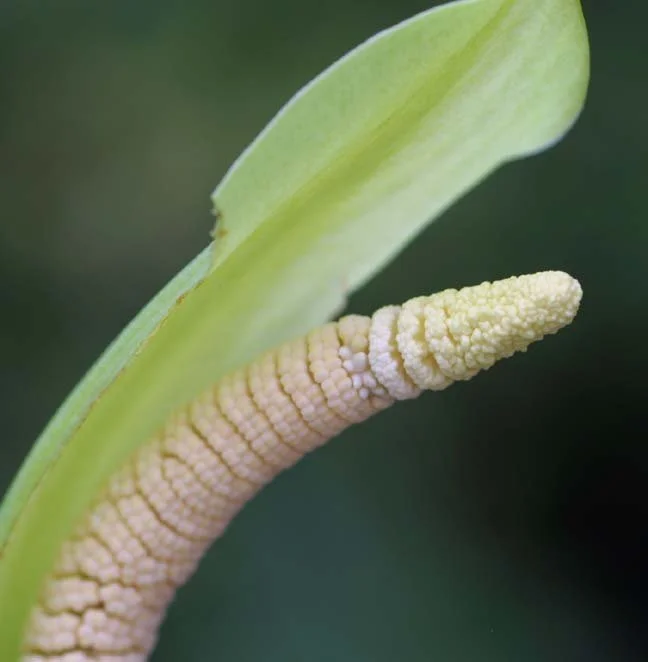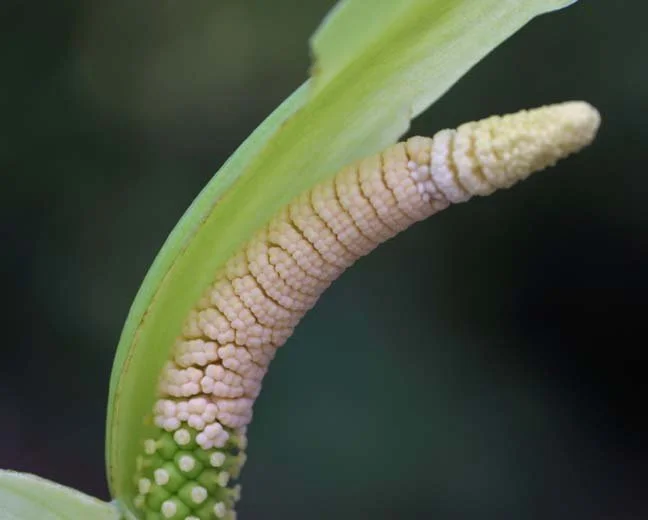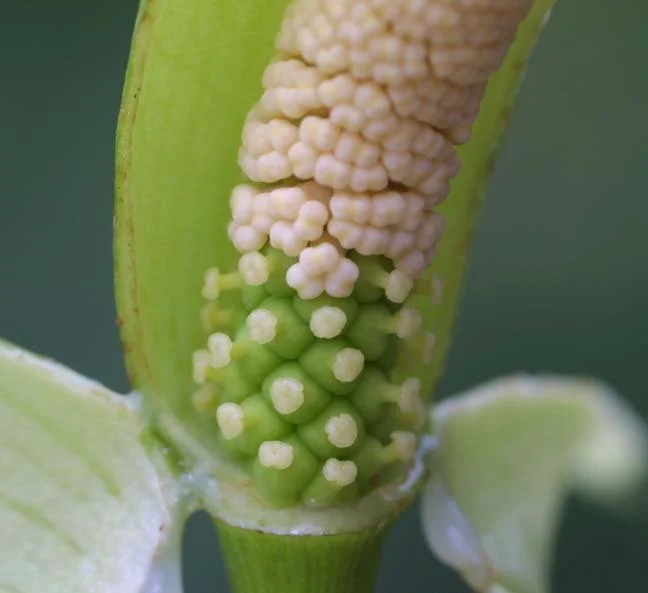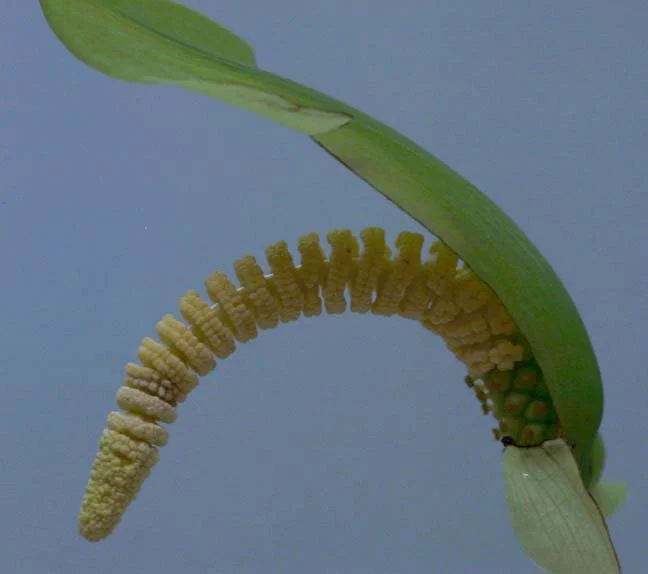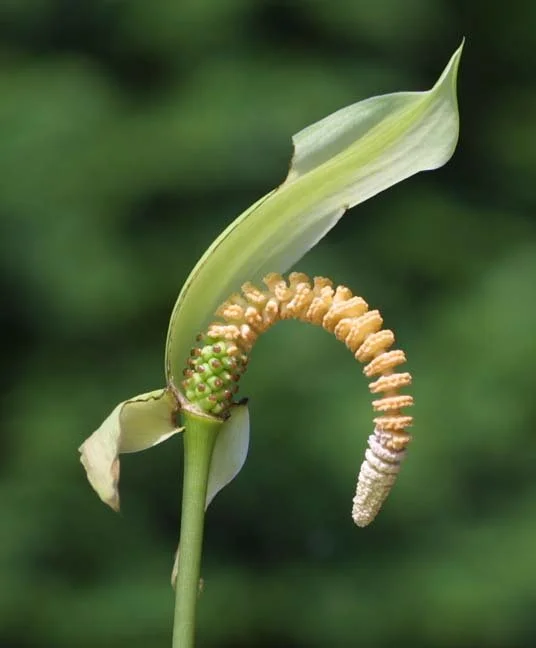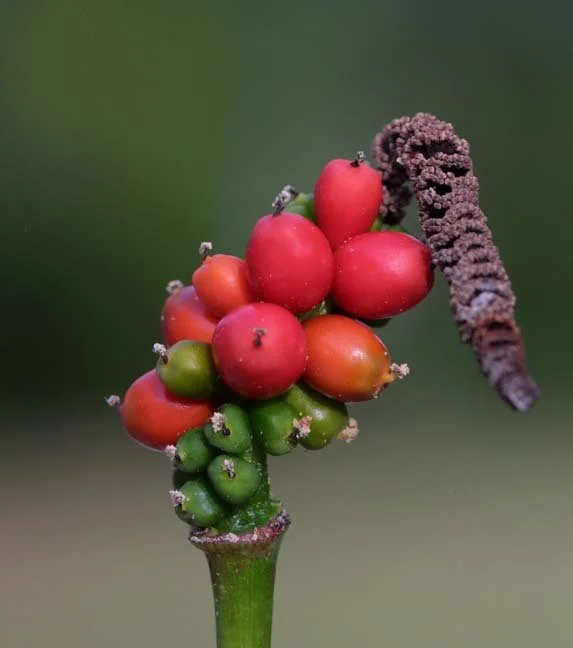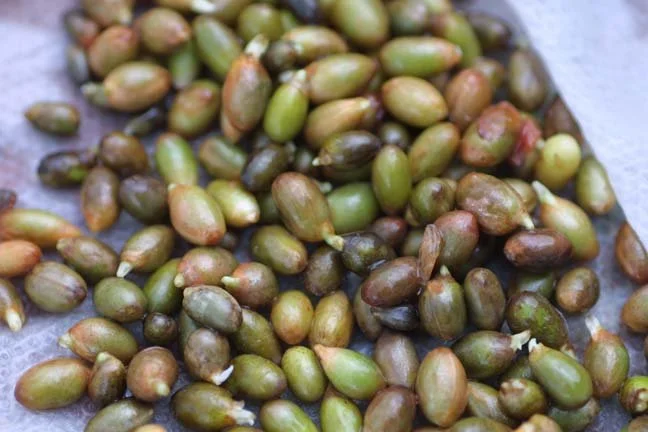AMORPHOPHALLUS ARCUSPADIX
ORIGINAL DESCRIPTION:
Amorphophallus arcuspadix Alan Galloway, Annop Ongsakul, & Petra Schmidt sp. nov. Type: from a plant cultivated by Alan Galloway (orig. coll.: LAOS, Bolikhamxay Province, in shaded areas among limestone boulders Alan Galloway), 3 June 2010, Galloway AGA-2021-02-T (holotype, QBG, spirit collection.).
Photo by Alan Galloway
SYNONYMS:
HOMOTYPIC SYNONYMS: N/A
HETEROTYPIC SYNONYMS: N/A
ACCEPTED INFRASPECIFICS: N/A
DISTRIBUTION: Laos
CLIMATE: Unknown
ECOLOGY: It is a tuberous geophyte and grows primarily in the wet tropical biome.
SPECIES DESCRIPTION:
Tuber subglobose, or slightly depressed, 4–5 cm in diam., 2.5 cm high, brown, seasonally producing rhizomatous offsets, these up to 18 cm long and 0.6 cm in diam.. Leaf solitary; petiole 20–30 cm long, 0.5 cm in diam., pale green, or pale brownish green; lamina moderately dissected, up to 40 cm wide, rachises narrowly winged; leaflets elliptic, tip acuminate, base decurrent, 5–15 cm long, 2–7 cm in diam., upper side medium green, lower side paler.
INFLORESCENCE: Inflorescence solitary, long pedunculate; peduncle 40–45 cm long, ca. 0.7 cm in diam., faintly longitudinally ridged, pale green or pale pinkish green; spathe ovate, 8–9 cm long, 3.5–4 cm wide, outside pale green, margins whitish green, inside pale green, base inside smooth, top broadly acute. Spadix slightly shorter than spathe, sessile, 7.5 cm long, during male anthesis upper part arches downward to position below female zone, sometimes stipitate, stipe up to 0.5 cm long, pale green to white; female zone cylindric, 1.25 cm long, 0.75 cm in diam., flowers congested; male zone cylindric, 5 cm long, 0.6 cm in diam., lowermost flowers somewhat free or irregularly chained, remaining flowers in a helix or separate verticils somewhat congested, during male anthesis interstices between verticils becoming elongate and appear exposing naked white spadix axis; appendix conic, top obtuse or subacute, densely verrucose base consisting of 1–3 verticils, top congested, 1 cm long, base 0.75 cm in diam, top 0.4 cm in diam. Ovaries depressed, circular or angulate in cross-section, ca. 1.5 mm high, ca. 2 mm in diam., pale green, unilocular; Style ca. 0.5 mm long, ca. 0.4 mm in diam.; Stigma disciform, circular in cross-section, ca. 0.3 mm high, ca. 1 mm in diam., entirely or shallowly 2–5 lobed, verruculate greenishwhite. Male flowers consisting of 3–8 stamens but the upper flowers laterally chained in a helix or verticils of 2 rowedanthers; Stamens ca. 3 mm long, creamywhite, turning to pale yellow at male anthesis; filament ca.1.8 mm long, connate in individual flowers into a thick,obconical column, ca. 2 mm in diam., in verticils also connate with neighboring flowers; anthers truncate, ca. 1.2 mm long, ca. 1.3 mm in diam.; pores apical, rounded or oval at anthesis; connectives sunken.
VARIEGATED FORMS: N/A
ETYMOLOGY: The species epithet refers to the arching of the spadix at male anthesis
NOTES: The spadix of Amorphophallus arcuspadix most closely resembles Amorphophallus verticillatus Hett. (N. Vietnam) and Amorphophallus interruptus Engl. & Gehrm. (N. Vietnam), all having a similar lateral chaining of the male flowers. The unique difference being during male anthesis: the spadix of Amorphophallus arcuspadix arches downward, whereas this behavior is absent in Amorphophallus verticillatus and Amorphophallus interruptus. The tuber of Amorphophallus arcuspadix is subglobose, whereas Amorphophallus interruptus is a broadly elongate, branching tuber and Amorphophallus verticillatus is a branching rhizome.
CULTIVARS: N/A
HYBRIDS: N/A
REFERENCES:
Photos by Jakub Rakovan, Jeremiah Baer and Justin Scholten

